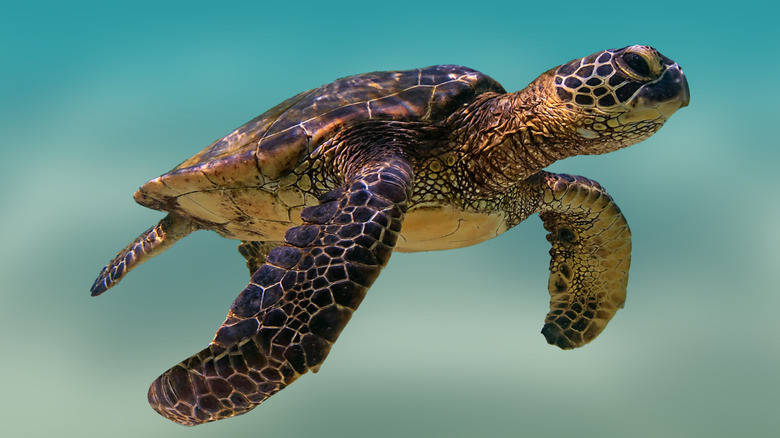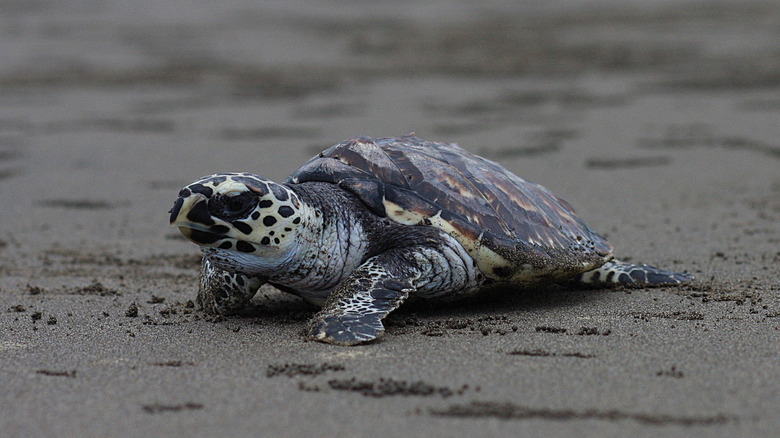Sea Turtles Are Thriving On This Unexpected State Coast
It's always dismaying when an animal becomes endangered, but there's something extra tragic about the world's smallest sea turtle becoming imperiled. The Kemp's ridley turtle measures just 2 feet long as an adult, and weighs only 70 to 100 pounds. It's recognizable by its triangular-shaped head and hooked beak, with a light green top shell color and yellow bottom shell. Sadly, this unique species of sea turtle has faced a variety of threats which have led to it becoming endangered — accidentally being caught in fishing equipment, habitat loss, egg harvesting, predation, changes to the climate and environment — all of which have resulted in the Kemp's ridley turtle becoming federally endangered. But conservation efforts have had some effect, and there remains hope.
The species is primarily found in the Gulf of Mexico, where it was once widespread. However, beginning in the late 1940s, the Kemp's ridleys saw a massive decline in numbers, with nests reaching a record low of just 702 by 1985. That meant that there were only a few hundred nesting females in the 1980s. Conservation efforts allowed the species to rebound in the 90s, however, and it began to flourish once again, until 2010 when the number of turtles and nests leveled out. Ever since, nest numbers have fluctuated but in 2025, the Kemp's ridley began to thrive in an unlikely location.
Kemp's ridley turtles are thriving on a Texas island
The vast majority of Kemp's ridley turtles nest in Mexico, with 95% nesting in the state of Tamaulipas. But there has always been a small proportion of the turtles that nest elsewhere, including in Texas. In June 2025, the species began nesting in record numbers along the coast of the Lone Star state, signaling a small but significant win for the endangered reptiles.
Back in 2017, 353 Kemp's ridley nests were recorded on the Texas coast. But according to a report from the Corpus Christi Caller Times, in June 2025 biologists documented 383 Kemp's ridley nests, with the potential for that number to increase as nesting season continues. What makes this even more encouraging is that these record numbers occurred despite potential barriers such as a large beached tree. The majority of this nesting has taken place at Padre Island National Seashore, a narrow barrier island southeast of Corpus Christi, Texas.
Although the beaches north of Tampico, Mexico are the turtle's main nesting ground, Texas has always provided an important secondary nesting site and has long represented the plight of the Kemp's ridley in microcosm, with fewer than 100 nests recorded between 1948 and 2001. Since then however, numbers have increased significantly, though just as with Kemp's ridley numbers overall, they have fluctuated since 2010. In 2019, the number of nests hit a low of 190 but rose to 340 in 2024. Now, the numbers look even more encouraging, and while it's not quite enough for the Kemp's ridley to be downgraded from endangered to threatened, it's a promising sign.

